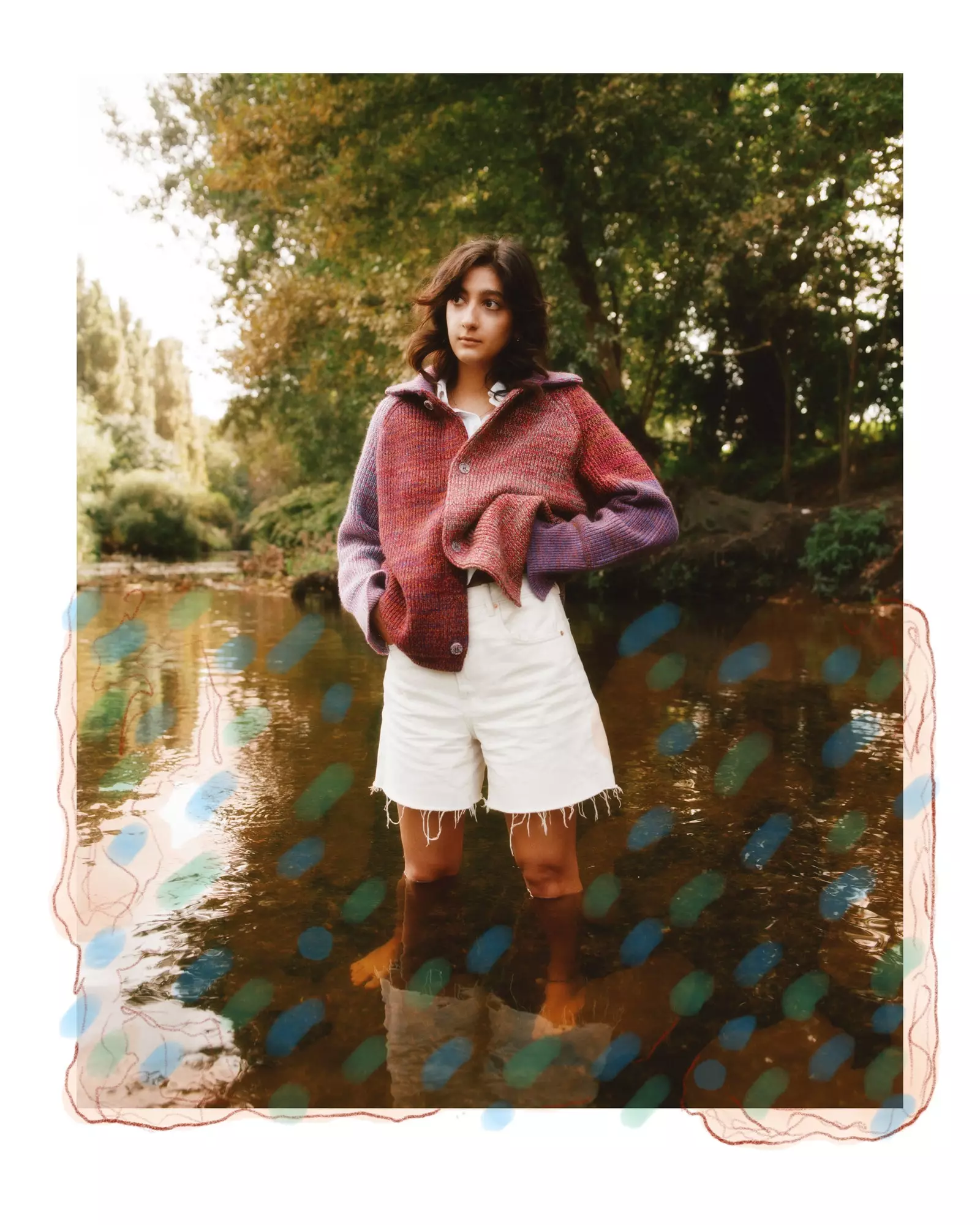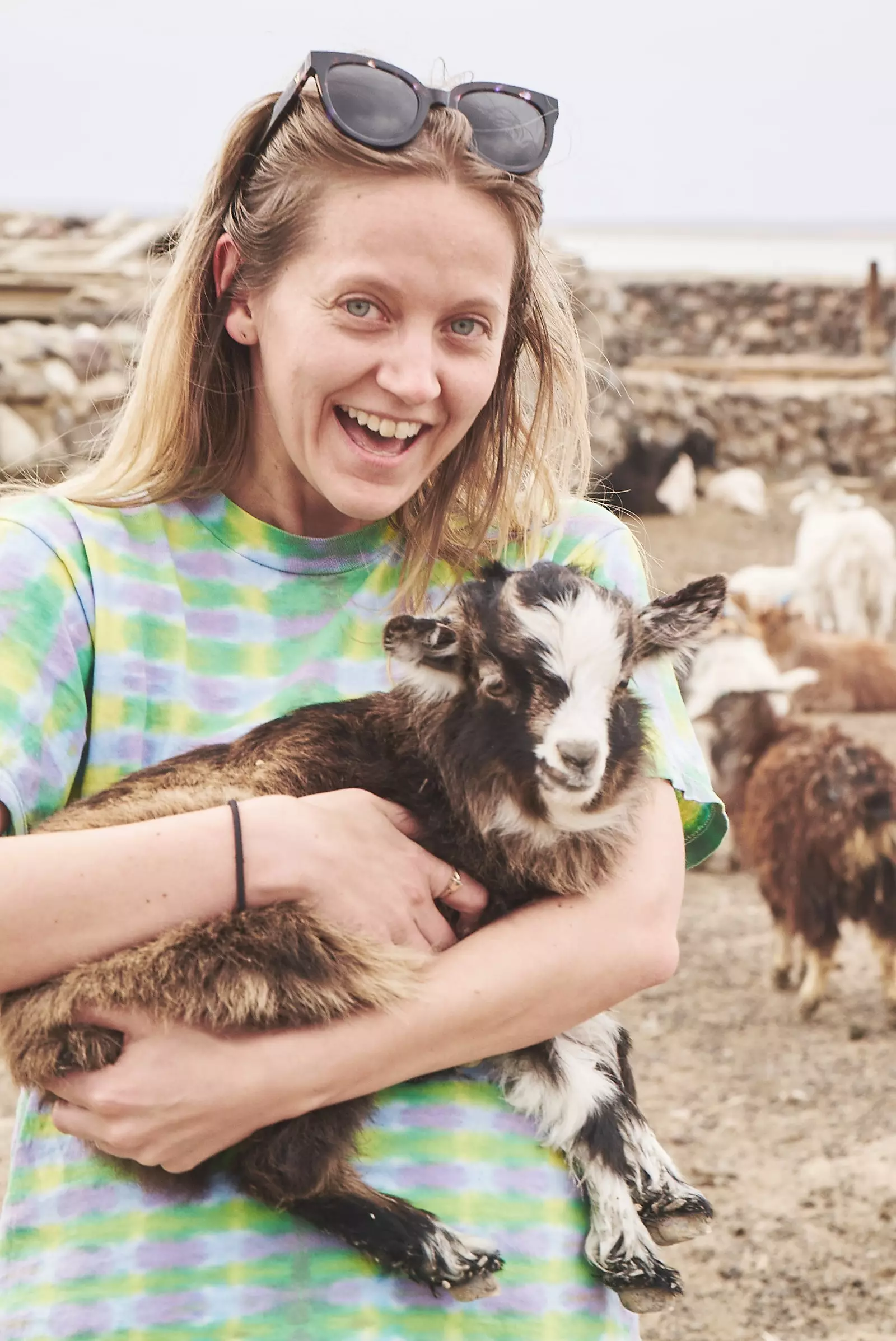“The Norwegian heritage in terms of weaving has certainly influenced my work,” Siri Johansen tells Condé Nast Traveler. the designer is the creator of Waste Yarn Project, a sustainable firm that uses surplus yarn to make unique pieces and numbered, handmade.
“We use game and chance elements in our design process. A wheel of fortune tells the knitters the technical information they need to make each piece unique. All the threads we use are surplus, something very difficult to use industrially, so our concept was find a solution to work with these small quantities of various leftovers”, Siri recounts.

Waste Yarn Project garments are unique.
The result is individually made pieces that "embrace randomness with endless possibilities." With more than a decade of experience designing knitwear at some of the world's leading fashion houses, Siri is used to watching dozens of boxes full of leftover thread from previous production being thrown away.

Portrait of Siri Johansen.
Each box contains different colors and material composition. These 'remnants' are too limited for a new production, the colors are not suitable for the new season or the reuse process is labor intensive and therefore often they are thrown into a landfill or incinerated.
Siri teamed up a few years ago with Sebastian Maes, an adventurous knitwear producer with whom she had worked for many years, to give shape to her dream: Waste Yarn Project.

Siri Johansen of the Waste Yarn Project in Iceland.
CULTURAL HERITAGE (AND LOVE OF TRAVEL)
“In my country everyone learns to weave at school and Both my mother and grandmother were great weavers. A great influence for me has also been the book of Annemor Sundbø, a treasure trove of Norwegian weaving history from 100 years ago to the 1960s”, she explains about the study carried out by this author on weaving patterns and cultural history, from a pile of knitted rags abandoned in factory storage bins.
Johansen has located her workshop in Shanghai, China, and she gathers inspiration from everywhere: "From travel, my friends, from mistakes and strange combinations, and I am also inspired by the factories I visit.”
"I love traveling. It gives me a lot of joy and energy –The creator points out, who has recently presented her work at Pitti–. Meet and exchange with people from other cultures, explore the markets, the food, discover the trade and the way of life. Practice trekking and outdoor activities.

Siri Johansen of the Waste Yarn Project in Mongolia.
"My favorite destination is Japan -he continues-, she has a unique blend of old and new, hi-tech and nature, it is such an extreme city with the most beautiful and serene nature at the same time. and i love them the mini bars so intimate that have! It is also the country that I have visited the most, below China, which I also love. And I keep dreaming Patagonia!”.
AROUND THE WORLD IN THREE VERY SPECIAL ACCOMMODATIONS
When asked about the hotels she likes the most in the world, Siri replies: "This is a tricky question, I love to experience different places and spend a lot of time looking for the 'best' hotels or unique stays, but to me that's not so much about luxury or a five star spa treatment. What I like is that the hotel reflects the environment and the local community.
Her favorites include the Old Inn Bandipur in Nepal. “The journey there and the view from your room is amazing, the decoration is simple and beautiful. The town is so beautiful…”.
Also the Egilsen hotel, in Iceland, which has a super cozy atmosphere. “The rooms are charming and offers an excellent breakfast. There is also a very nice restaurant, Narfeyrarstofa, across the street! It is a great place to explore this western part of the island.”
Finally, Siri advises us to know Klatre Hytta, a cabin high up in a tree on a small island in Norway, not far from Oslo. “To find the tree house in the dark, you have to follow a path lit with small candles and when you enter, the fire is already lit. It was a truly magical experience in the middle of the forest, ideal for bird watching… and the stars”.
